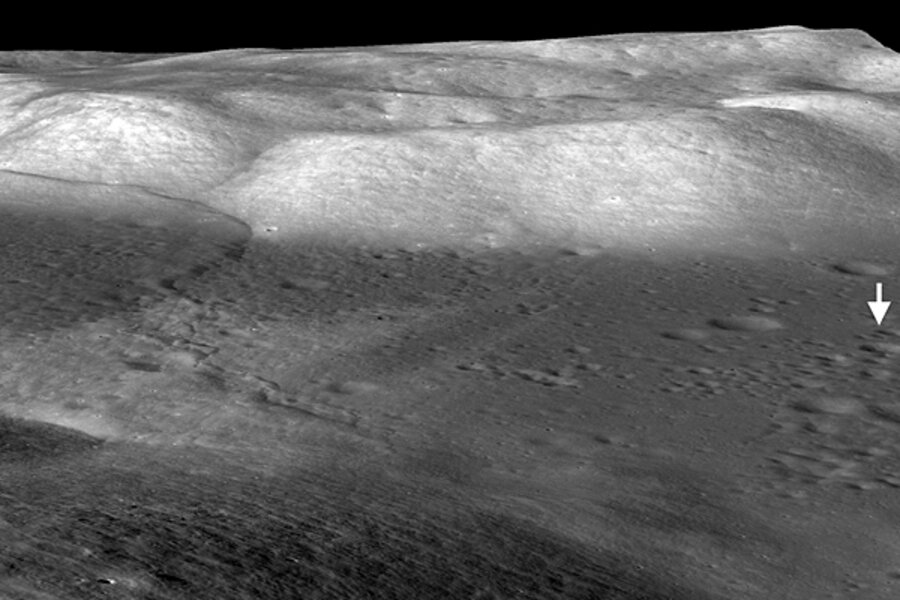The moon is shrinking. No, seriously.
Loading...
P.T. Barnum would have fun with this one: The incredible shrinking moon.
But it's true. Images from NASA's Lunar Reconnaissance Orbiter (LRO) have uncovered evidence that the moon is shrinking.
Not by much, mind you. The lunar surface is about a football field's length closer to the center of the moon that it was, say, a billion years ago.
But for an object long thought tectonically dead, the discovery of "recent" faulting on the lunar surface indicative of shrinkage is pretty surprising. It's but the latest indication that "this isn't your grandfather's moon anymore," says Michael Wargo, chief lunar scientist at NASA headquarters in Washington.
"When you look at the new information we've garnered with a number of different missions to the moon over the last year, we're now talking about the moon in a completely different way," he says. "It was thought to be dead and unchanging. And now you have this dynamism."
The changes the LRO has uncovered may be taking place on geological time scales, he explains. But recent evidence that the moon has its own active, if spare, hydrological cycle has revealed a process that occurs on weekly and monthly time scales.
The moon's newfound dynamism is "just unlike what folks were thinking of a year ago," Dr. Wargo says.
Finding faults
The evidence for recent shinkage comes in the form of newfound thrust faults on the lunar surface. These are faults that result when one section of crust pushes up against another section – a process that can take place as planetary objects contract.
Mercury is the poster child for this process. It's shrink-induced fault scarps can stretch for hundreds of miles and rise some 3,000 feet or more.
On the moon, the faults are far more modest. The scarps there are no more than about 300 feet high. And they only stretch for a few miles.
That such details on the moon's surface could be detected at all speaks to the highly detailed images the LRO's narrow- and wide-angle cameras can produce. Some of the most stark scarps appear in a limited set of locations in high-resolution Apollo photos. But it took LRO's cameras and the orbiter's global coverage to find the less obvious relatives to the Apollo scarps.
The LRO team discovered 14 new scarps to some 30 or so discovered during the Apollo missions. Moreover, half the new scarps are at high latitudes, lending credence to the idea of a global mechanism – shrinkage – forming them, says Smithsonian Institution planetary scientist Thomas Watters, the lead author of a paper announcing the discoveries in the current issue of the journal Science.
'Relatively young'
And how does the team figure the activity generating the new scarps is recent?
Many of the scarps cut across small craters – the kind of craters that disappear fairly quickly from the lunar surface. That suggests that the "scarps must be relatively young," Dr. Watters says.
Beyond that, the features have no large craters superimposed on top of them. And the scarps themselves look fairly pristine, he adds.
The team estimates that the tectonic activity generating the scarps occurred within the last 800 million years, and perhaps could still be active today.
The mechanism driving the tectonic activity is the cooling of the moon's interior, the team says.
Based on estimates of the strain needed to generate the moonquakes strong enough to form the fault scarps, the results argue for a history of the moon that posits a magma ocean covering a cooler lunar core. That magma ocean would have been created by large impactors that pummeled the lunar surface during a period known as the Late Heavy Bombardment, between 4.1 and 3.8 billion years ago.





